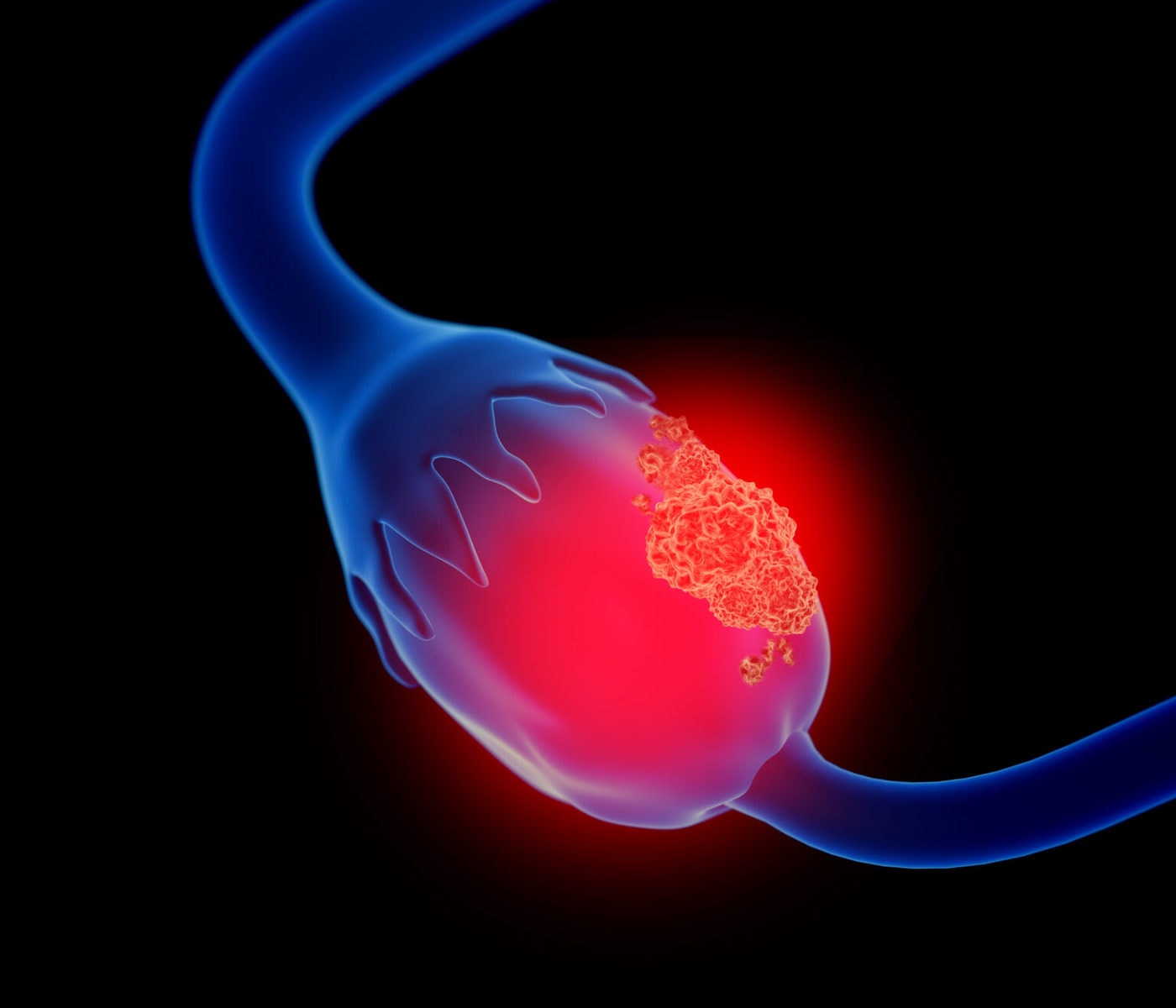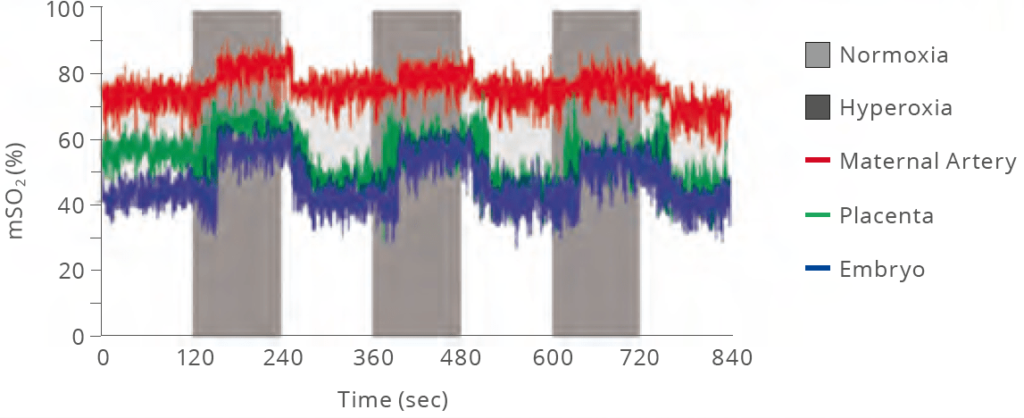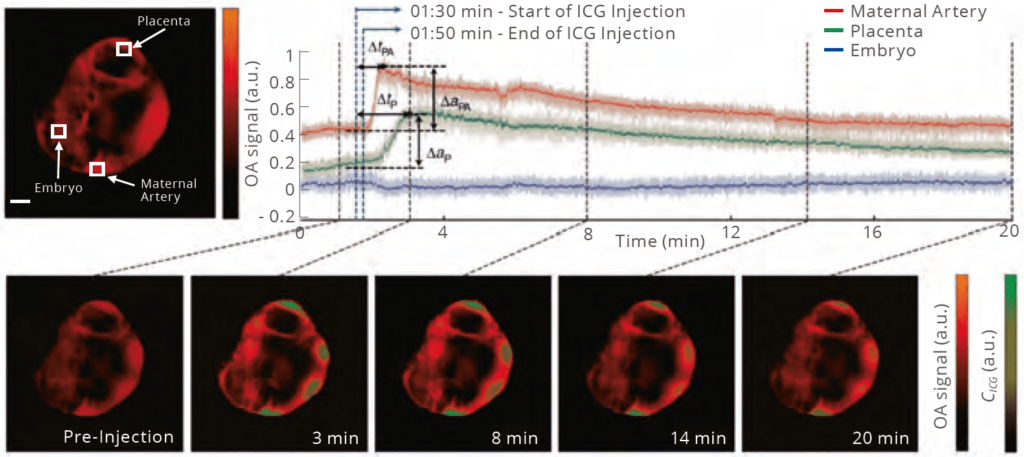Placental ischemia is thought to be an initiating event in the development of preeclampsia, a condition accounting for over 10% of maternal deaths. MSOT imaging has been used to assess the oxygenation status of the placenta and surrounding tissue and is able to monitor placental ischemia status over time. In combination with suitable dyes, measurement of placental perfusion and vascular status is easily assessed.



Single wavelength contrast (greyscale) of a mouse embryo and placenta, with oxygenated and deoxygenated hemoglobin shown in red and blue pseudocolor, respectively.
Existing imaging strategies are limited, and few offer the ability to non-invasively assess anatomical, functional, and molecular information of the placenta and embryo simultaneously. Optoacoustic imaging provides an opportunity to better understand fetal development and define strategies for protecting the wellbeing of the unborn fetus.
Courtesy of Weizmann Institute
Oxygen-enhanced multispectral optoacoustic tomography (OE-MSOT) takes advantage of spectral differences in oxygenated and de-oxygenated hemoglobin to map responding vascular regions, demonstrating the ability of MSOT to capture functional information during development. Because contrast is generated from endogenous hemoglobin, no exogenous contrast injection is needed, making the workflow safe, simple, and reproducible.
Basak et al. Light Sci Appl. 2019


Oxygen saturation measurements in the embryo, placenta, and maternal artery during cycles of inhalation of 20% oxygen or 100% oxygen.

Quantification of MSOT signal enhancement in the embryo, placenta and maternal artery following intravenous injection of ICG.
Selective passage of substances to the developing embryo is a critical placental function for maintaining an environment conducive to proper development. Placental-fetal transfer of various exogenous substances – including drugs and antibodies – is a critical area of research with few tools available to precisely monitor these events in vivo. Optoacoustic imaging can resolve labeled molecules with high spatiotemporal resolution, allowing for real-time assessment of perfusion and clearance in placental and embryonic regions.
Basak et al. Light Sci Appl. 2019